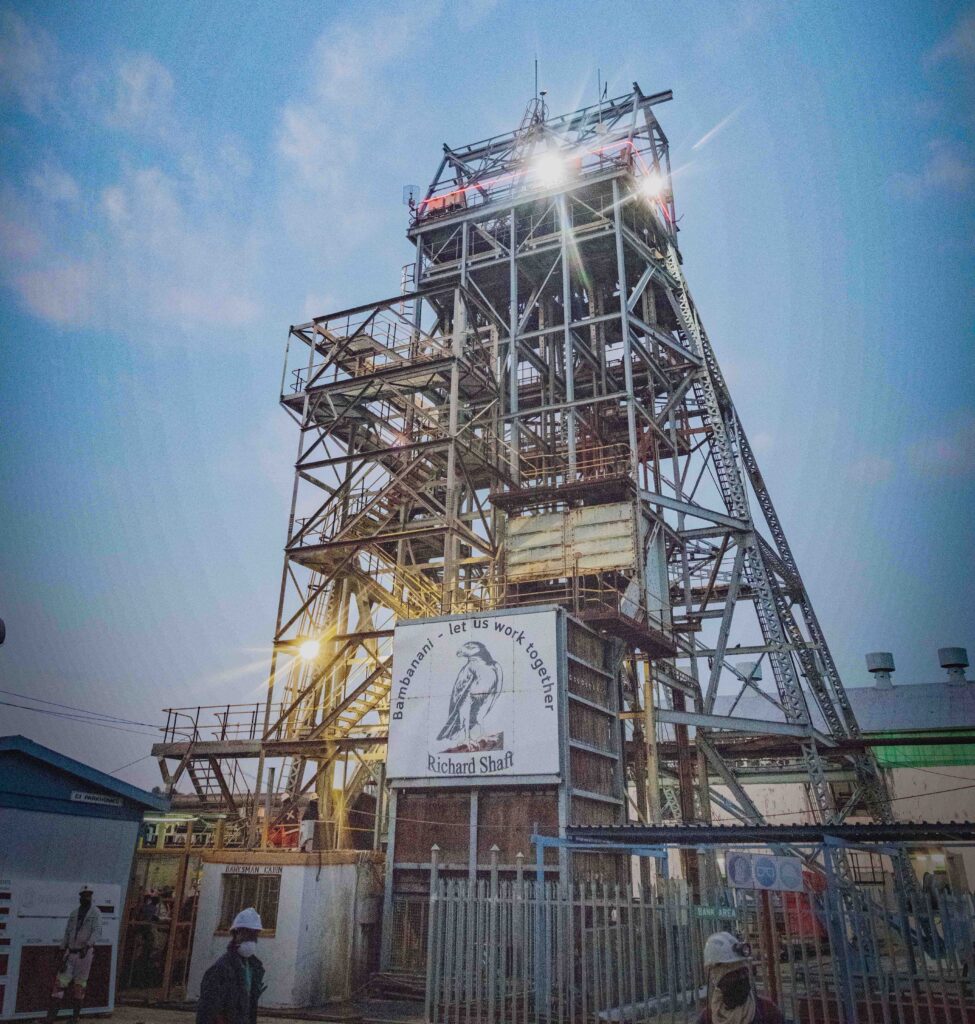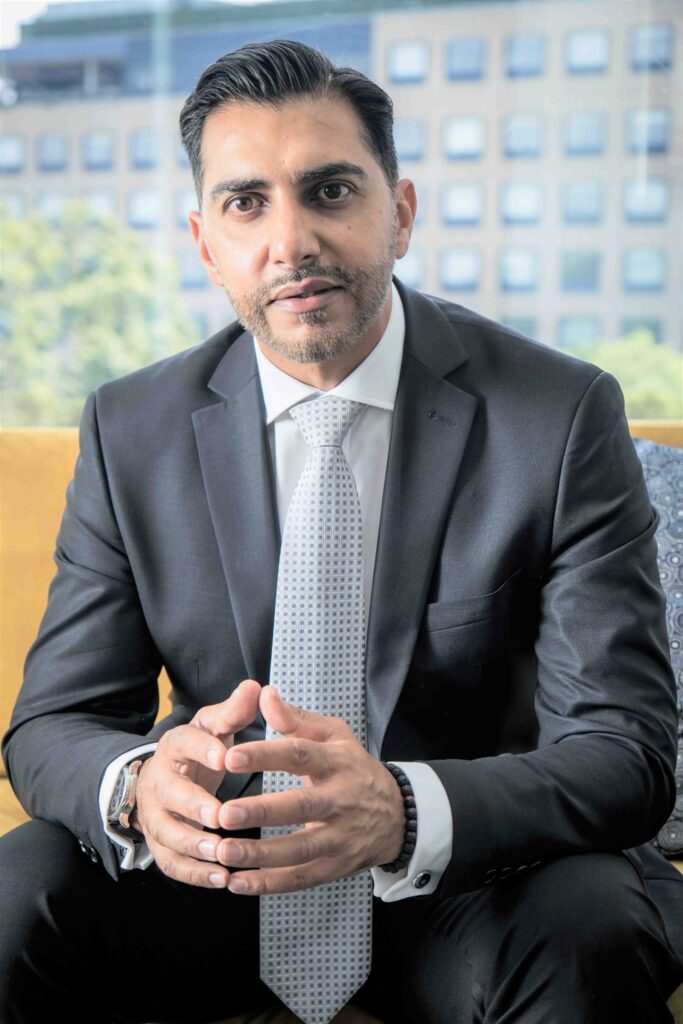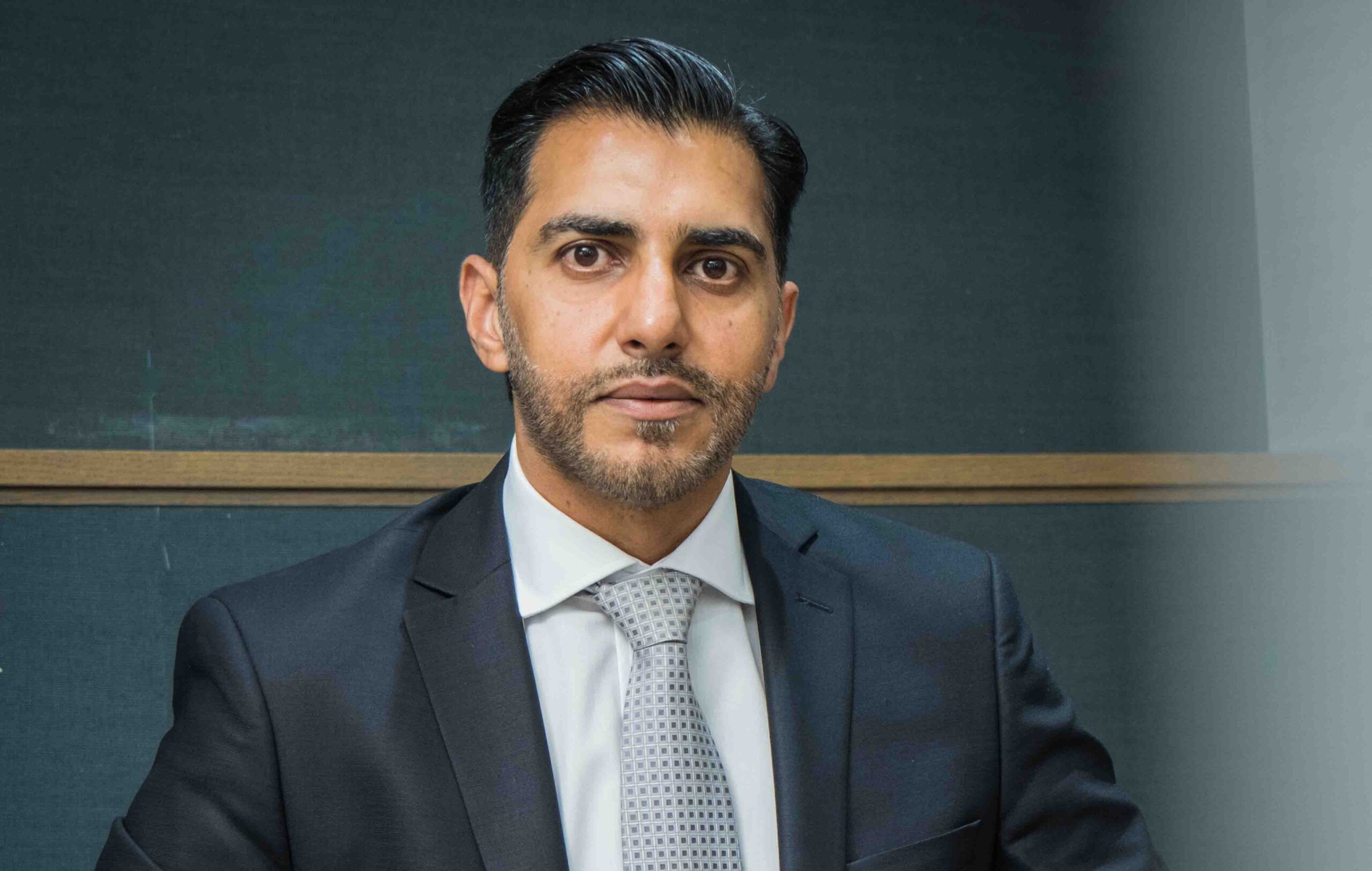Mr Imraan Osman, the Executive Director of Siyanda Resources and Chief Financial Officer of their Platinum Business sat down with Leadership Editor, Prof JJ Tabane to reflect on his views about the mining industry in general and the activities of Siyanda Resources.
My experience with Chief Financial Officers has not been particularly exciting in my career. I was therefore pleasantly surprised by the dynamism of Osman. It became increasingly clear in conversation that straddled strategy and tactics in business, stakeholder management, business acumen and ingenuity are what we are dealing with here; a truly different breed of Chief Financial Officer – the one who believes that the numbers are the means and not the end and are equally a result of various strategic initiatives unfolding in sync within a broader business context.
His story sounds persistent enough with a range of studies in the commercial field, serving articles and then joining the mining industry some 20 years ago. This also led to an MBA with GIBS complementing his management experience in the sector. He spent 13 of the 20 years of his exposure to mining at Anglo American Platinum. He joined the mining industry at Anglo Platinum in the financial services sector as a doorway to his career in the mining industry.
Anglo Platinum is an end-to-end mining company with multiple opportunities for growth and development, says Osman. What in the main prepared Osman for the role he plays today as CFO is the depth and breadth of the learning and working environment that he was exposed to when he started in his mining career with Anglo Platinum. He spent a number of years working within various disciplines within the Mining Sector, from financial services, Operational mining, Processing and then downstream beneficiation in his quest to secure the requisite knowledge and skillset to operate in his current role.
As an Operational Finance Manager on a mine, Osman asserts that one needs to have a holistic understanding of the business methodology and processes in order to effectively discharge the financial role meaningfully. Obtaining an understanding of both mine processes coupled with the unique operational culture helped Osman to consolidate his skill set in order to be an asset to the organisation.
The Future of Mining Beneficiation
The mention of ‘processing’ triggered a critical discussion about beneficiation which is a big topic within the South African Economic Landscape regarding the future of mining. This was even more relevant for our discussion given the most recent edition of the Mining Indaba – the first official one since the end of the pandemic.
Osman believes that localised beneficiation of metals mined within the country makes sound business sense, however the practicality and timing thereof needs to be soundly considered. Government’s push to challenge mining companies to expand into downstream beneficiation has to be headed despite that practically it seems prohibitive in terms of the capital and infrastructure that needs to be deployed. Osman remains of the view that a considered and deliberate strategy would need to be deployed to bring this to fruition. South Africa’s mining industry has in regular conversation been considered a sunset industry, and a deliberate focus on beneficiation could see this revert to a sunrise industry with significant economic and social benefits.
I posed the question as to how we reverse the current situation that the industry finds itself in where beneficiation (or the lack of it) is concerned. Osman’s view was that whilst South Africa currently does not have the beneficiation infrastructure required to support the blooming of a proper beneficiation industry, a focussed strategy on partnering with international counterparts and trade partners in developing these localised industries is warranted in the establishment of this industry. Osman argues, that despite its critical importance, there is no immediate or short-term solution.
I pushed back that the mining industry in South Africa has a long history and has not re-invested for downstream beneficiation – “It requires deep pockets,” Osman says. “Moreover, a measured and considered approach is required for this to be a successful venture.”
Globally, industries that benefit from South Africa’s refined products are well advanced and there should be effort made to replicate it here.
Osman however cautions that considering the shift from the Internal Combustion Engine to electric vehicles, one needs to be circumspect with regard to the use of PGMs in the Green Economy. With the demand for catalytic converters being on a decline given the switch to electric vehicles, the outlook for PGM’s in the automotive industry might not be as attractive as it once was. “We would probably have to look at metal uses that support the hydrogen economy which in turn may call for the birth of new industries,” concludes Osman.
This led to a profound discussion on battery metals within the African continent and that South Africa had a key role to play unlocking the next phase of the green economy through energy storage. This comes up in reference to the approach that Zimbabwe has recently announced restricting the export of the minerals mined for the manufacturing of Lithium-iron batteries and thus requiring localised beneficiation thereof. While our neighbour’s approach is correct in terms of furthering the country beneficiation strategy, it does seem to pose certain practical challenges.
Osman is concerned that trying to establish both primary and secondary markets at the same time could be perceived as too high a risk from a foreign investor perspective. Osman believes that this makes the whole project development very expensive in terms of cost of capital and equally difficult to finance.
Osman says there will be a huge demand for both the batteries and the components, and this possible rising demand will require a visionary approach that must anticipate huge growth.
Philosophically the Africa strategy and thinking is crucial for the future of the Green Mineral Industry. Osman muses that this is what South Africa should be actively pursuing.

The Energy Crisis – Implications for Mining
We moved on to the recently staged Mining Indaba where our current energy crisis took centre stage. Osman shares that this and the issue of renewable energy seemingly dominated the conversation at the Indaba. Battery metals also remained a topic of keen interest, especially Lithium.
Osman says that as a result of the South African mining industry being predominantly deep level and labour intensive, mines have not been exposed to loadshedding like the rest of the country but rather a process termed load reduction. Eskom and its mining clients through a collaborative process manage load reduction in a measured and efficient manner that is premised on mitigating the risk to people working underground who are heavily reliant on the energy for ventilation and oxygen. Siyanda like many of its peers in the industry retain back-up or emergency generation capacity in the event that the Eskom grid becomes unavailable and emergency protocols need to be deployed to ensure the safety of its people – to date, this has not been used. With the current energy crisis and the pervasive nature of challenges faced by the state utility, Osman remains concerned that this might not always be the case, which is why there is a need to consider alternative power sources, on an urgent basis.
Osman further shares with me that Siyanda, like many of its counterparts in the industry were ecstatic with the increase to 100 megawatts of own generation capacity that was announced by government recently. “It gave impetus and renewed focus to exploratory work that we were doing within the energy space”, Osman adds. Mining is an energy intensive industry and the 100MW dispensation allows companies to scale up sufficiently to meaningfully support Eskom with alternative generation capacity within the private sector whilst driving the global decarbonisation agenda.
Subsequent to the announcement, Siyanda accelerated its multipronged approach to renewable energy. The company is in the process of developing its own 175MW site through a combination of embedded Photovoltaic (PV) and further wheeled energy. Siyanda seeks to supply energy directly to its PGM operations via an embedded line thus mitigating the risk of grid dependency whilst further wheeling additional PV into the grid for use by its other operations.
In addition, Siyanda has gone out to market and is at an advanced stage of partnering with an IPP for a 40MW wind project which will complement the energy mix within the company.Osman asserts that while these projects are capital intensive, Renewable Energy is high on the Global agenda with a substantial green capital being made available predominantly through international financial institutions.
Phase 1 of Siyanda’s PV project is estimated at c.R800m with discussions already underway in securing the required funding.
Osman further advises that the single largest challenge with renewables is the storage component thereof, for which there is no economic case at this stage. This segways into a different conversation around battery minerals and Siyanda’s ambitions of advancing within this commodity sector. It was both interesting and encouraging to note the work that Siyanda is doing within this area. Osman elaborates that with the drive towards the Green economy, Siyanda has established a vertical stream within Siyanda Resources coined Siyanda Green which apart from renewables, is focussed on battery minerals and hydrogen. Over the past 18 months, Siyanda has evaluated various battery mineral opportunities on the African continent and is now at an advanced stage of concluding opportunities that will concretise Siyanda’s presence and role in this space.
Financial Health and Growth
Osman says that the financial health of an organisation cannot be isolated from the overall business health and sustainability thereof. He believes that financial health as an element of the overall enterprise health must speak to profitability and liquidity as short-term key metrics with asset management and infrastructure development being medium to longer term performance indices. Effective and efficient capital deployment and the ongoing management of assets and infrastructure are critical to the sustainability of mining operations.
The PGM sector has enjoyed higher than average metal basket prices between 2020 and 2021 primarily on a higher Rhodium price coupled with a weaker exchange rate. Siyanda applied a considered approach in deploying the multi-year windfall through accelerated development of its mining asset and related infrastructure, reducing debt and creating liquidity headroom on the balance sheet, whilst equally returning value to shareholders in terms of extraordinary dividends. The company is therefore now well positioned for ongoing expansion through further organic growth and M&A opportunities.
Socio Economic Empowerment
Inherent within the DNA of Siyanda, is the core purpose of growth and enterprise development. Since inception, Siyanda’s operating model is one where through collaboration with local communities, employees, and skilled experts, the company has managed to acquire and turn around distressed assets thereby returning substantial value to all its stakeholders, especially the host communities in which it operates.
Siyanda being a 100% B-BBEE company with most shareholders being local entrepreneurs, corporate social investment remains at the heart of the company. Through the acquisition of distressed assets, the company has been responsible for saving thousands of jobs and livelihoods within communities by turning these assets around and positioning them for success.
Through its poverty alleviation program, Siyanda runs nutrition centres that provide 3 meals a day for underprivileged children whilst through its Basic Education and Career Development programs, the company supports schools with the provision of learning tools and other academic support. Siyanda further runs a bursary scheme for matriculants wanting to study further and supports graduates with learnerships through its own operations and its partners within the broader business community.
Osman proudly adds that it is most rewarding to see the real benefits of meaningful corporate social investment when talented youth are provided the opportunity to attend schools and universities and then return to serve and prosper within the communities in which they lived.
Prof. JJ Tabane is the Editor of Leadership Magazine and BBQ magazines

Who is Imraan Osman
Imraan Osman Profile
A Chartered accountant by profession and a holder of an MBA from GIBS, Imraan Osman is currently the CFO of Siyanda Bakgatla Platinum Mine, and the Executive Director of Corporate Finance and Business Development for the Siyanda Resources Group.
He began his career with KPMG Accountants and Auditors as an articled clerk and thereafter moved into various roles in Mining, stemming from Financial Management and Governance through to Corporate Finance and Group Strategy.
Work Experience
Present: CFO at Siyanda Bakgatla Platinum Mine (Pty) Ltd
Director of Business Development and Corporate Finance at Siyanda Resources (Pty) Ltd
Previous:Head of Finance and Performance Management–Process Division at Anglo American Platinum
Senior Manager: Financial Planning at Anglo American Platinum
Senior Finance Manager: Operations at Mogalakwena Platinum Mine (Anglo American Platinum)
Financial Accounting Manager – Anglo American Platinum
Senior Manager–Audit and Assurance: Bergh and DeBruyn Registered accountants and auditors
Article Clerk: KPMG
Education
- SAICA – CA (SA)
- Master of Business Administration at GIBS
- BCompt honours with CTA, Accounting and Finance
- Bachelor of Accounting Science
- About Siyanda Resources
- Siyanda was founded in 2004 by a group of black business professionals with the objective of building a resources business around industrial minerals, energy and the raw materials used in the manufacture of steel products, which collectively drive industrialisation and infrastructure development.
- Over a period of less than a decade, Siyanda Resources has grown from a single asset investment company into a diversified and multi-faceted resources and minerals group consisting of cash generative businesses as well as developmental assets.
- Siyanda holds various controlling and minority interests in a number of operating assets as well as in undeveloped (greenfield) and expansion (brownfield) resources and beneficiation projects. The group has grown both organically as well as through a series of acquisitions which have been funded from internally generated funds and external financing. Siyanda has also disposed of a number of assets after achieving significant growth during its period of ownership.
- This remarkable story has not been achieved alone, but in collaboration with selected partners that contribute meaningful value and compliment Siyanda’s existing technical and management capabilities.
- Siyanda’s vision and strategy is aligned with the principal objectives of the country’s National Development Plan (NDP) which aims to drive industrialisation, mineral beneficiation and infrastructure investment as well as address socio-economic development priorities such as:
- The promotion of exports and beneficiation.
- Job creation and youth employment.
- Broad-based black economic empowerment (BBBEE).
- Achieving energy security.
- The Company has distinguished itself from other BEE’s by leveraging the founders’ extensive operational expertise, actively seeking continuous improvement, building a track record for being the lowest cost producers as well as being disruptors in the mining industry.
- Every step that the company takes is guided by values that are rooted where the passion for limitless success first began.

